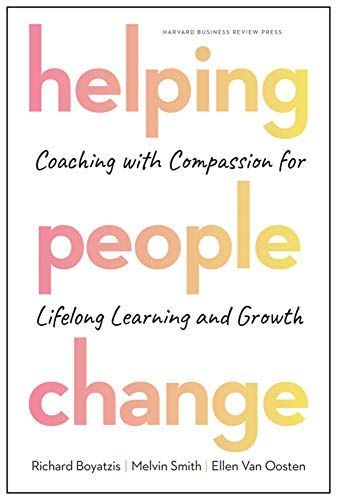
Helping People Change Coaching with Compassion for Lifelong Learning and Growth
You're trying to help. But are you actually helping? No matter who you are, helping others is a good thing. Often, as a leader, manager, doctor, teacher, therapist, or coach, it's central to your job. But even the most well-intentioned attempts to help others can be undermined by a simple truth: We almost always focus on trying to "fix" people, correcting problems or filling the gaps between where they are and where we think they should be. Unfortunately, this doesn't work well, if at all, to inspire sustained learning or positive change. Even when a person does respond, they often do so out of a sense of obligation rather than inner motivation. There's a better way. In this powerful, practical book, emotional intelligence expert Richard Boyatzis and Weatherhead School of Management colleagues Melvin Smith and Ellen Van Oosten present a clear and hopeful message. The way to help someone learn and change, they say, cannot be focused primarily on problems that need to be addressed, but instead must connect to that person's positive vision of himself or herself, to an inspiring dream or goal they've long held. This is what great coaches do--they know that people draw energy from their visions and dreams for themselves, and that same energy sustains their efforts to change, even through difficult times. The authors use rich and moving real-life stories, as well as decades of original published research on coaching and helping relationships, to show how coaching others around their dreams and visions--what they call "coaching with compassion"--opens people up to thinking creatively, helps them learn and grow in meaningful ways, and motivates them to sustain that growth far into the future. In contrast, problem-centered approaches trigger physiological responses that make a person defensive and more closed to new ideas. Filled with probing questions and exercises that encourage self-reflection, Helping People Change will forever change the way coaches, managers, teachers, parents, and all of us think about and practice what we do when we try to help.